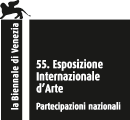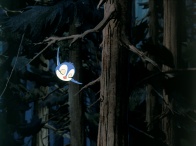Imitation of Life is a new film work and installation by the artist Mathias Poledna.
A 35mm color film roughly three minutes in length, Imitation of Life was produced using the historic, labor-intensive technique of handmade animation and is built around a cartoon character performing a musical number. Its buoyant spirit and visual texture evoke the Golden Era of the American animation industry during the late 1930s and early 1940s. In the preceding years, the time of the Great Depression, the medium had evolved from a crude form of mass spectacle into a visual language of enormous richness and complexity that shaped and continues to resonate in our collective imaginary.
Imitation of Life appropriates and reassembles this language as it revisits the contradictions and ambiguities that accompanied the medium’s development. Advanced methods of production and visual ingenuity – indebted to the syntax of European modernism in its handling of surface, depth and color, and lauded by the avantgarde and critic intelligence of the time – coexisted with sentimental characterization and storytelling based on age-old fables and fairy tales.
Among the most pronounced features of the film is the extreme contrast between the conciseness of its scene, and the extraordinary amount of labor that went into its creation: more than 5,000 handmade sketches, layouts, animation drawings, watercolored backgrounds and ink-rendered animation cells, produced in close cooperation with acclaimed artists from the animation departments of film studios in Los Angeles, most notably Disney. Several small groups of these drawings are presented in the Austrian Pavilion.

